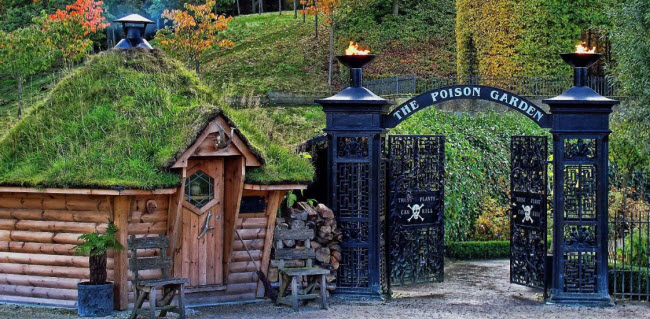Expansive and artistically designed gardens are some of the most enchanting places to visit, especially when seeking a serene retreat from the noise and bustle of modern life. While many exceptional gardens around the world offer peace and tranquility, the Alnwick Poison Garden in Northumberland, England, stands out for its unique and perilous character. Known for hosting some of the most toxic and deadly plants, this garden demands extreme caution from its visitors. Ignoring the warnings and safety signs can put lives at risk, making vigilance crucial.

What Sets the Alnwick Poison Garden Apart?
Named after its proximity to Alnwick Castle, the garden’s creation is credited to Jane Percy, the Duchess of Northumberland. This historic county in northeastern England extends to the Scottish border. The Duchess aimed to transform the area surrounding the castle—formerly commercial woodlands with nothing more than rows of Christmas trees—into a unique tourist attraction that would appeal to visitors, especially children. In 1996, she enlisted renowned landscape architect Jack Firth, who had previously worked on the French presidential gardens, to help design what would become a 12-acre attraction drawing 600,000 visitors annually. Despite this success, the Duchess sought something distinctive to set her project apart from other English countryside gardens. Initially planning a medicinal garden, her vision changed after visiting the infamous Medici Poison Garden in Italy. This visit inspired her to create a garden featuring deadly plants rather than healing ones. Her idea was further solidified by a subsequent visit to an ancient Scottish hospital site, where she learned about opium and hemlock used in medieval amputations. The goal was to educate children about the significance of plants, highlighting the contrast between life-saving and life-threatening species.


A Visit to the Alnwick Poison Garden
Established in 2005, the Alnwick Poison Garden is located behind a black wrought-iron gate adorned with skulls and crossbones and is filled with numerous cautionary signs. The garden currently hosts over a hundred types of historically notorious toxic plants responsible for countless deaths and illnesses. Visitors receive specific warnings from guides to enjoy the plants from a safe distance. Touching, ingesting, or even smelling any of the plants is strictly prohibited. Parents bringing their children must supervise them closely, as the consequences of ignoring the rules can be severe.


Safety and Educational Value
Despite these stringent safety measures, every year, 20 to 30 visitors fall victim to the garden’s dangerous plants, experiencing symptoms of poisoning from inhaling toxic fumes, particularly from bay laurel plants that also grow wild in parts of Britain. These incidents often lead to local residents cutting back laurel hedges and transporting them away in trucks, sometimes resulting in accidents due to drowsiness from inhaling plant fumes. The garden also features plants with severe effects; for example, giant hogweed can cause serious burns and long-term sun sensitivity, while consuming a small amount of belladonna berries can be fatal to children. The henbane plant induces hallucinations, and its odor can cause dizziness. Gardeners working with these plants must wear gloves, face shields, and hazardous material suits to ensure their safety.


Educational Section on Drug Plants
In addition to its deadly plants, the Alnwick Poison Garden includes a section dedicated to harmful plants used in drug production, such as cannabis and cocaine. This section serves as an educational tool to raise awareness about drug dangers, subtly educating children about the risks associated with these substances. The Duchess views this as a way to inform children about the potential dangers of drugs in a natural, engaging manner, planting valuable knowledge at an early age.
